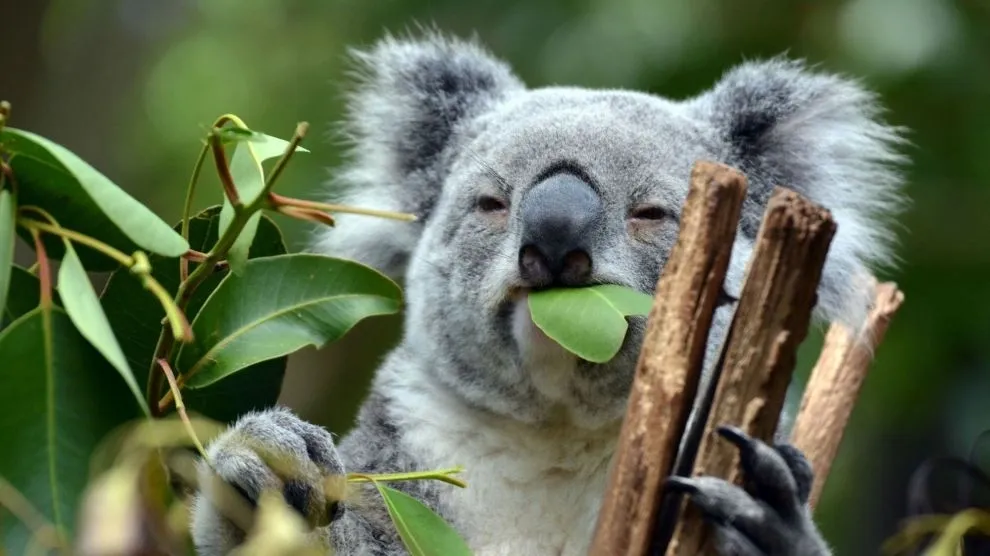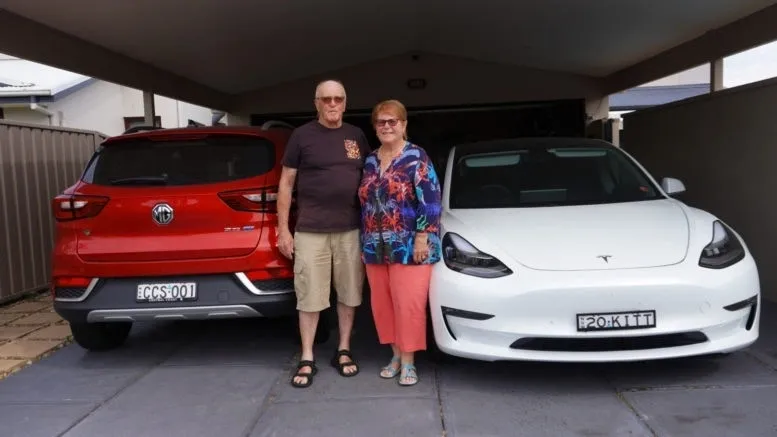
It’s almost a month since Environment Minister Tanya Plibersek released the State of the Environment Report (SOE) and a flurry of headlines followed but the news cycle moves on quickly so, in this series, we will explore the SOE in detail, its implications and what it tells us we must do to bring our environment back from the brink.
By Jackie Pearson
The State of the Environment Report has been published in full here https://soe.dcceew.gov.au/.
It was supposed to be released last year by the Morrison Government but it’s easy to understand why former Environment Minister, Sussan Ley, and Prime Minister Morrison let it gather dust.
Its key messages are dire and distressing.
In this article we examine the “Overview” chapter. The second article in this series will examine the key points made by the new Environment Minister, Tanya Plibersek, in her address to the National Press Club, which coincided with the publication of the report and we will seek a response from the federal opposition and cross benches.
One core message from the SOE is that current levels of both land clearing and mining are unsustainable when combined with the escalating climate crisis.
In the words of the authors: “The state and trend of the environment of Australia are poor and deteriorating as a result of increasing pressures from climate change, habitat loss, invasive species, pollution and resource extraction.”
We are told that “many species and ecosystems are increasingly threatened”.
“Abrupt changes in ecological systems have been recorded in the past five years,” the report’s first chapter explains.
The overall number of species listed as threatened has grown by eight per cent since 2016, it says.
“The number of listed entities will increase substantially in coming years as a result of the 2019-20 bushfires… Our inability to adequately manage pressures will continue to result in species extinctions and deteriorating ecosystem condition.”
According to the SOE, Australia has lost more mammal species than any other continent and continues to have one of the highest rates of species decline among countries in the Organisation for Economic Co-operation and Development (OECD). “The true number of extinctions is likely to be significantly higher because many species are poorly surveyed or poorly described, or both. Increasingly, we are resorting to the costliest conservation mechanisms of restoration, rehabilitation, ex situ conservation, translocations, and the creation of safe havens on islands and in fenced areas.”
The report informs us that our nation does not have, but needs, a framework to deliver holistic environmental management “to integrate our disconnected legislative and institutional national, state and territory systems”.
Climate change is now
Climate change is putting pressure on all parts of the environment right now, according to the SOE. Its authors highlight the worst-ever “extensive, catastrophic bushfires” which were followed by months of heavy and continuous rain. “The combined effect of increasing temperatures, changing rainfall patterns and extreme weather events are affecting our soils, water and vegetation, and all the species that rely on them. Climate change and associated extreme events, compounded by other pressures, have had a major impact on biodiversity over the past five years, and further consequences are likely to be magnified in the future,” the SOE confirms.
“Many of Australia’s most valued and iconic ecosystems are at risk from climate change and environmental extremes. For example, the Great Barrier Reef is adversely impacted by unprecedented marine heatwaves that cause bleaching events and threats to coral recruitment. Bushfires have ravaged much of Australia in the past few years, including burning in ecosystems that are normally resistant to fire.”
The authors of this report are calling for nothing less than “Immediate global action to reduce carbon emissions” which they say will reduce pressures and improve trajectories for most aspects of our environment.
The SOE highlights that the combination of increasing land and sea temperatures, changing fire and rainfall regimes, rising sea levels and ocean acidification are having “profound effects” that will continue.
It warns that changes in sea ice extent, and land and sea temperatures, will drive profound changes in Antarctic species and ecosystems, which will in turn “have substantial and ongoing impacts on Australia’s climate and sea levels”.
It reinforces the public’s understanding that “the intensity and frequency of extreme weather events are changing. Climate science predicts that there will be increasing impact from many extreme events, including a potential expansion in their distribution, changes in their duration, and increasing complexity of linked impacts”.
Climate change continues to warm and acidify the ocean. There have been “several major marine heatwaves during the past five years, resulting in an overall deteriorating trend”.
Agriculture also faces significant effects from climate change, including damage to tree crops caused by more severe storms and cyclones, the effects of heat stress on domestic animals, and more insidious impacts that disrupt the lifecycles of pollinators and beneficial predatory insects.
Pressures on the urban environment are expected to increase with climate change, including a rise in urban temperatures, raised sea levels and urban flooding, as well as loss of biodiversity. The increased frequency and intensity of extreme events “will exacerbate impacts on buildings and infrastructure, and the effectiveness of current engineering solutions to these events,” the SOE warns. According to the SOE, there’s insufficient investment and lack of coordination to address these growing impacts.
Land, air and sea under pressure
The total area of land and sea that is under some form of conservation protection is increasing, but the overall level of protection is declining, the report says. Nearshore reefs are in poor condition and “many coastal habitats and communities are highly impacted in locations where multiple pressures combine to overwhelm ecosystem health and function”.
According to the SOE, air quality is likely to remain good on most days of the year. “However, changes in the climate are likely to cause more summertime smogs in urban areas, and the increasing intensity of storms in some regions may increase the potential for serious thunderstorm asthma events, which will affect health, especially for vulnerable individuals and populations”. The increase in extreme heatwave events and summer bushfires may make poor air quality a recurring feature of summer.
Australia is burdened by thousands of non-native species introduced deliberately or by accident over the past 200 years. There are now more foreign terrestrial plant species in Australia than natives. Many are likely to become even more problematic with climate change.
Other countries increasingly will not accept our waste. Landfill and waste strategies have unacceptable impacts on our land through soil and water pollution, and illegally dumped waste also has a significant impact on the land through its direct effect on soils, waters, biota and habitats.
In other words, according to the latest State of the Environment report, all aspects of the environment require careful planning and management, based on reliable data, to ensure that our environment continues to support human health and wellbeing, and to minimise the impacts of change on our communities in the future”.
WHAT YOU CAN DO
As the ‘Outlook and Impacts’ section of the SOE’s overview chapter spells out “In a rapidly changing climate, with declining biodiversity, the general outlook for our environment is deteriorating. The impacts of this will affect us all.”
From an ESG point of view that could be taken to mean an effort to find solutions rests with “us all”. The Overview chapter does give some hints of the initiatives, changes and work needed to stop catastrophe during the next five years.
It calls for “greater national leadership” to “foster coordinated action and encourage investment to address our mounting environmental and heritage issues”.
There is a big call in this SOE to listen to and co-develop “solutions with Indigenous and local communities”. To that end the report has been billed as the first to be based on a combination of “scientific, traditional and local knowledge, put together by Indigenous and non-Indigenous people”.
In terms of the importance of First Nations’ connection to country, non-Indigenous Australia has much to learn from Traditional Custodians and First Nations should be empowered to collect data and manage country in a culturally sensitive way.
It suggests expanding the role of Indigenous land and sea management – including Indigenous Protected Areas (IPAs) within the National Reserve System. It calls for greater recognition of the important role of Indigenous rangers in conserving both cultural heritage and natural values.
However, it says that “current funding arrangements for Indigenous land and sea management and IPAs are inadequate to meet the demands and require greater certainty into the future”.
“Significant new effort is required to consistently manage environmental and heritage matters,” it says. This will require better monitoring and reporting, substantial improvements to data collection, curation and analysis, the SOE says.
It talks about the need to find “new sources of innovative financing and commitment from government and industry” and to expand “collaboration across governments and nongovernment sectors”.
It tells us that “immediate action with innovative management and collaboration can turn things around”.
Better coordination of data and the introduction of national environmental standards should improve environmental reporting.
According to the report, improved data collection and analysis should lead to a better understanding of “protection levels necessary to ensure ecosystem integrity”.
It talks about the need to grow the “circular economy” through reuse, recycling and upcycling.
It cautions against clearing of bush remnants to build more housing on the urban fringe and in regions.
It suggests that “rebuilding major urban areas to be more environmentally sensitive and nature focused” may be a better approach.
According to the SOE we will need to manage “green links and corridors within urban areas” to support habitats and urban biodiversity.
We may need to change existing policies and regulations that are regionally based so that construction codes cover events that are more likely to occur in the lifetime of the structure. The same codes then need to be applied to maintenance and upgrades. In other words we need to rethink the way we plan from allocations of land use through to design, construction and renovation.
And what if we do nothing?
According to the World Economic Forum, the top 5 global risks in terms of likelihood to cause significant negative impacts within the next 10 years are extreme weather, climate action failure, human environmental damage, biodiversity loss and infectious diseases.
Environmental degradation is now a threat to humanity, that could cause societal collapse.
“The World Economic Forum described the global risk of biodiversity loss and ecosystem collapse as having ‘irreversible consequences for the environment, humankind, and economic activity and a permanent destruction of natural capital, as a result of species extinction and/or reduction’.
“The current negative trends in biodiversity and ecosystems will undermine progress towards most of the targets of the United Nations Sustainable Development Goals related to poverty, hunger, health, water, cities, climate, oceans and land.”
We are told by the State of the Environment Report that to fix what we have already broken will “take courage and leadership, but it is critical if we are to reverse the declines and forge a stronger, more resilient country to face the challenges in front of us”.
We have a choice.
The Overview Chapter of the State of the Environment Report was written by: Cresswell ID, Janke T, Johnston EL (2021). Overview: Outlook and impacts. In: Australia State of the environment 2021, Australian Government Department of Agriculture, Water and the Environment, Canberra, https://soe.dcceew.gov.au/overview/outlook-and-impacts, DOI: 10.26194/f1rh-7r05, ISBN: 978-0-646-86427-3


